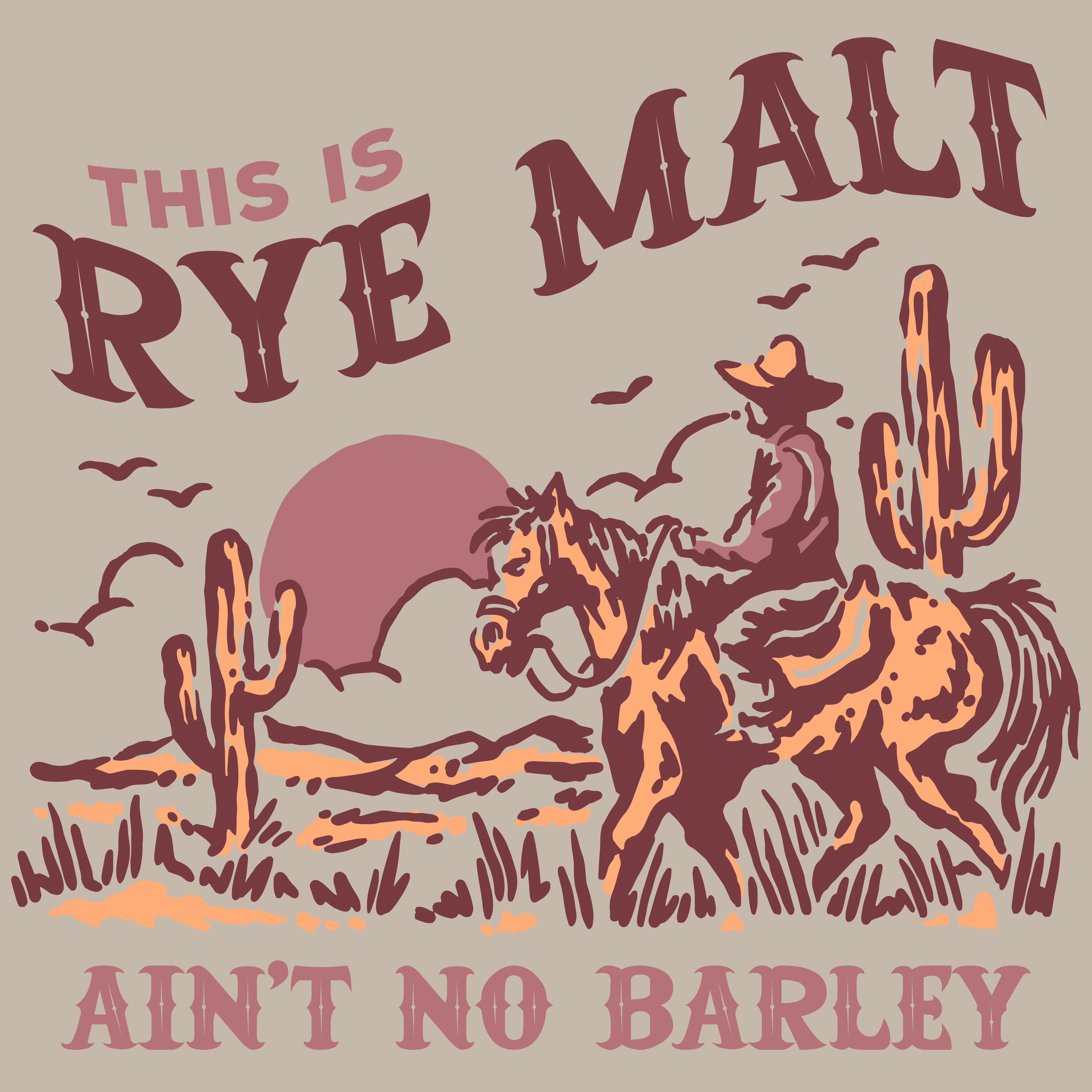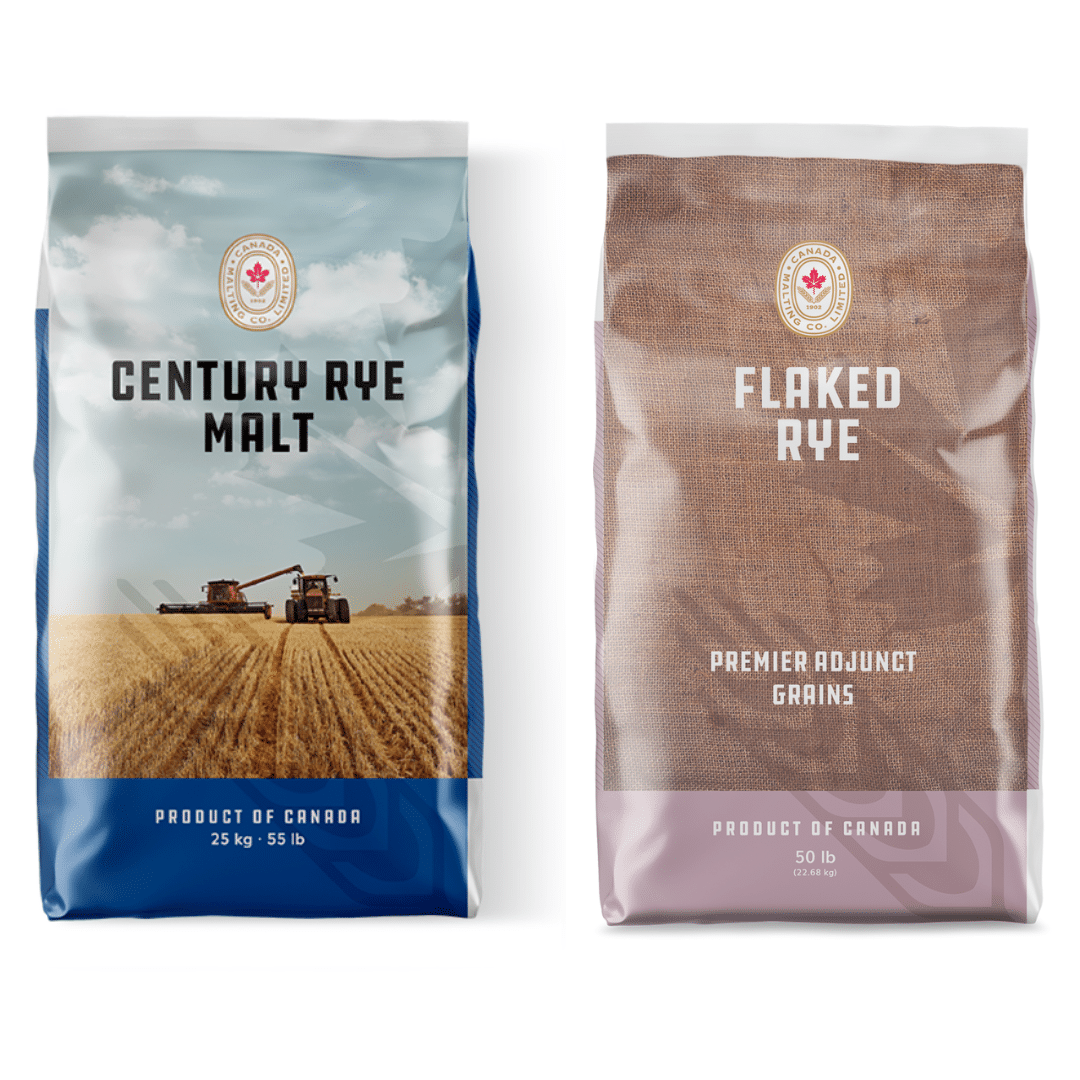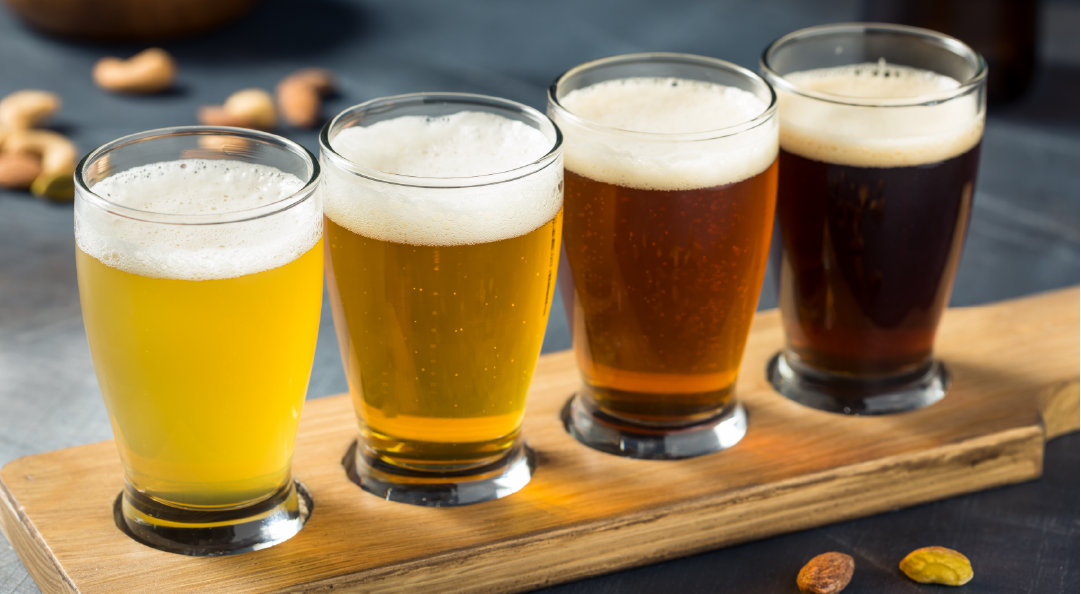
RYE NOT?
By Abi ConnerWe often view rye as the not-so-unsung hero in the distilling world, but what about in the beer world? Barley, wheat, and oats are our first thoughts when creating a beer recipe, but let’s not be afraid to venture into a spicy, full-bodied world where rye is the star of the show.
Different Types of Rye
Rye comes in many forms including malted rye, flaked rye, raw rye, and higher kilned rye; such as crystal, biscuit, and chocolate. Using any of these will result in different levels of distinctive flavors that you can’t really find in any other malt. “Not all rye is the same, lean on flaked rye for a softer feel, and rye malt for a stronger spice character,” advises my seasoned brewer friend and CMG’s Territory Manager, Patrick Sylvester. Canada Malting offers both of these types of rye for you to give a shot.
Canada Malting Co. Rye Products
Canada Malting’s Century Rye Malt is a full grain that lends a full, rich, spicy flavour profile to your recipe, and can be used as the primary base in a recipe. My recommendation is to use 10-15% of Century Rye in your recipe for the best results, but up to 20% can be used.
Another great option is Canada Malting Premier Flaked Rye, which is made from traditional steam and electric heat in multi-step precision recipes. Use up to 30% of Premier Flaked Rye for a softer spicy, earthy flavour, and a fuller body and mouthfeel.
Pro-tips: Brewing with Rye
Rye malt can certainly be a hero when brewing beer, but it can also very easily become the villain due to high amounts of beta-glucans, which can be sticky and tricky. Beta-glucans are starches made up of long strands of molecules, which increase wort viscosity. There are a few ways for you to alter your brew day to make rye a bit easier to work with.
Step one, milling. Make sure to check your mill gap as rye kernels are much smaller than barley grains, tighten it up for milling in. I’d recommend somewhere around .034-.035” for regular rye malt kernels. Also, remember that rye kernels are husk-less, so they can get stuck at times. Keep an eye on it! Patrick Sylvester recommends adding the rye malt later in the milling process to keep the rye off your mash grates. You can also just add the rye at the end of your mash.
When mashing in with rye malt, increase your mash temp by 1 or 2 degrees and add a little extra water. This will help prevent slow runoff and an easier sparge. No one likes a stuck mash, and we especially hate a lagged lauter. You can do a 1-2 hour beta-glucan rest, or you can raise the mash temp for better lauter flow.
If you’re wanting to avoid a rest or potential increase in malt sugar extraction by raising mash temp, another option is to use rice hulls in your mash to avoid lautering problems. Add about 10% rice hulls at the bottom of your mash tun against your grates to assist in filtration. Bump up the usage of rice hulls if you are using more than 20% of rye in your grain bill.
Using flaked rye can make your brew day quite a bit easier overall but can change the flavor profile a little bit. You’ll still taste a distinct rye flavor in your finished beer, but it won’t be as intense as using rye malt. The benefit of using flaked rye is that it is pre-gelatinized and easily convertible when used with standard base malt. If it is your first-time brewing with rye, I highly recommend you start with flaked rye.
Beer Styles with Rye
Rye can be used in many different styles ranging from lighter lagers using 10-15% rye all the way to a traditional German Rye beer called a Roggenbier, which uses up to 60% rye.
One of my favorite styles to make with rye is a dry, spicy IPA. Adding rye to an IPA with fruitier hops like Citra, Chinook, or even Amarillo will balance out the citrus flavors and will give a beautiful reddish tint. Adding flaked rye will also improve the head retention and mouthfeel of an IPA.
I also really love to throw in a little (5-10%) rye when brewing a Pale Ale to enhance hops like Centennial or Liberty hops. Adding a bit of spice and grittiness can really step up a normal pale ale recipe. Adding rye into a pale ale will give you a pretty color SRM of around 6-6.5.
If you’re really going all in, I’ll mention my German buddy again, the Roggenbier. Brewing this style isn’t for the faint of heart, but I promise if done properly, you’ll be sipping on the most lovely traditional rye beer that dates all the way back to the 600’s! Pro-tip when brewing this style: a decoction mash is recommended.
No matter the style you’re going to give a try, we have you covered here at CMG. Visit our webstore to learn more about our expansive rye product portfolio.

Listen and Learn More about Rye
We explored the intricacies of RyeMalt for brewers and distillers on the BrewDeck Podcast. We discuss finding the perfect rye malt percentage and other challenges of using rye. Finally, we close out with a maltster’s insights on how malting rye contrasts from barley and the best varieties. Listen to S5 E6 “This is Rye Malt, Ain’t No Barley” on Spotify and Apple Podcasts.



